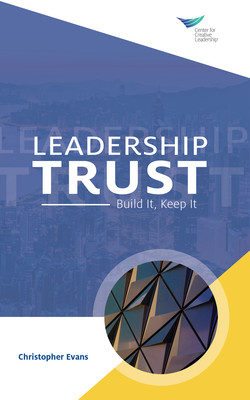Читать книгу Leadership Trust: Build It, Keep It - Christopher Evans - Страница 7
На сайте Литреса книга снята с продажи.
ОглавлениеWHAT IS TRUST?
At its core, trust is an assurance that lets people manage risk in their relationships with others. As a decision mechanism, trust frees people to work closely together, and a lack of trust keeps reminding them to remain guarded. People seldom even think about the role trust plays when they interact with others—until some element of risk emerges in those relationships. When leaders take charge of how they deal with trust in everyday personal interactions, they gain control over a powerful tool for moving their initiatives forward, enhancing their collaborative efforts, and improving execution across their organizations.
Think about a time when you simply could not trust someone or were uncomfortable sharing responsibility for an important project with him or her. Write a few brief notes on the following questions:
What was the situation in which the lack of trust emerged?
What did this person do to fail to win your trust? What was your history with him or her?
What did this lack of trust feel like to you?
JENNA’S JOURNEY: Part One
From Jenna’s perspective, every team meeting was the same. Eighty percent of the time was spent complaining or blaming, and the rest of the time was spent just inching along on the project until things reached crisis stage. Jenna didn’t want to transfer to another division and disrupt her learning or her career, but something had to be done. As she made notes about her team experiences, some issues—both positive and negative—emerged:
Positives
• Simulating projects
• Learning opportunities across the division
• New experiences to advance her career
Negatives
• Lack of productivity during team meetings
• Poor or incomplete work results from some team members
• Lack of support from the manager
• Conflicting work priorities among team members
• Need to work in crisis mode too often
Jenna shared these issues with the team in hopes that opening the negatives up for discussion would lead to an interest in solving them. She was wrong. The team members spent the rest of the discussion talking about whose challenges were greatest and how things never changed. When Jenna asked if they could take these issues seriously as a team she got reluctant approval from one person and a smile from another. But nothing changed.
To trust is to make yourself vulnerable to the actions of another, because you are in a relationship together. You might ask yourself during an encounter with someone in your organization whether you are willing to turn over your project, your deliverable, or some of your reputation to this person, knowing you could be disappointed or hurt by what he or she does.
To trust means making an active choice to risk something that’s important to you or to your project that may have a lasting impact. In this way, trust and risk are two sides of the same coin.
People’s experience of trust—how much they will trust—depends on the situation. You may be perfectly comfortable having a neighborhood high school student babysit your children when you go out to dinner, but you wouldn’t trust her to make decisions about your retirement portfolio, nor would you want her to deliver the team presentation to your organization’s senior leadership team. It’s perfectly reasonable to trust someone in one situation but not in another. In fact, it’s probably wise to do so.
“ Leadership today is all about two words: It’s all about truth and trust. ” —Jack Welch
